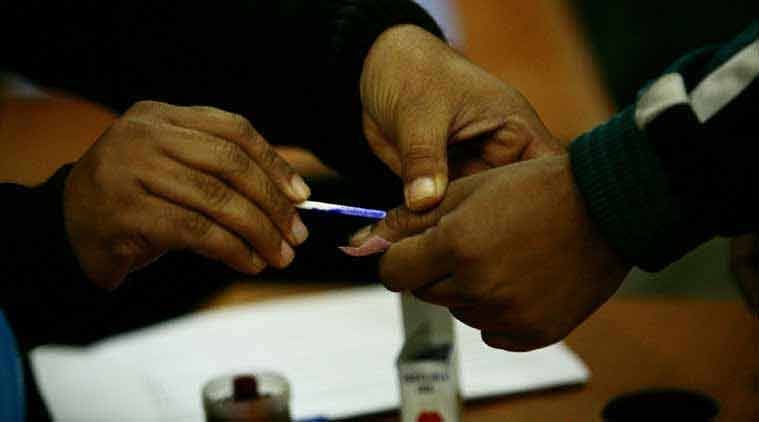The idea of India may have lost its political currency.
The sheer scale and size of Narendra Modi’s electoral victory poses fundamental questions beyond the usual election analysis. The BJP has not only defied anti-incumbency to increase its overall voteshare, but has also made inroads into new regions and constituencies to consolidate its grip on power across large parts of India. What has been puzzling is that the time-tested “it’s the economy, stupid” argument does not fully explain this political outcome. Unlike the 2014 general election, where the BJP tapped into the simmering discontent against corruption and accusations of “policy paralysis” of the UPA government, the 2019 election was fought against ill-thought policy interventions like demonetisation, farmer distress, and an overall shaky economic performance of the NDA government. The prime minister’s (well publicised) micro-welfare schemes are not an adequate explanation because the UPA government too had invested substantially in pro-poor policy measures. According to the material logic, then, the voters should have penalised the BJP. Yet, the voters have not only not penalised the BJP but also decided to give it a second chance. The repeat performance is a critical indicator that the 2014 election was most likely not a chance occurrence but perhaps the first signpost of a more persistent trend.
If 2019 is indeed an affirmation of the 2014 verdict, then what precisely is being affirmed? What futures does the emergence of a majoritarian coalition portend for India’s minorities? Put differently, what remains of the “idea of India”, to invoke a familiar and over-used phrase, in the face of unabashed majoritarian politics? These questions are critical primarily because the voters have given near carte blanche powers of legislation and government to the BJP. This in itself is a cause of anxiety in a democratic order where the Opposition is too marginal to make a difference or play a meaningful role. So what kind of India is emerging in this shifting political landscape?
The debate has naturally turned to the realm of ideas. While some worry that the soul of India risks being corroded, others contend that it is not an ideological preference for Hindu nationalism as such but “money, media, and tech” which upset the balance. Amartya Sen has recently stated that what Hindu nationalism has won is power but not the battle of ideas. Implicit in this range of responses is the assumption that the “idea of India” is intact and untarnished even in this momentous change — the people have been merely hoodwinked through a dazzling spectacle produced through unfair means. A part of this belief is correct — the BJP’s media machinery oiled by nearly unlimited funds is without parallel in the history of contemporary India. That the party does not hesitate to forge a victory through all available means is too well known. The other part is incorrect — that the idea of India is stable and constant. Ideas are never permanent; they are always work-in-progress that require constant attention and nurturing. The assumption that a permanent core of India — secular and inclusive — exists, and will continue to exist despite all challenges, is part of the problem. It presumes a spiritual core of the nation that is unalterable, and one that exists outside the material world (money, media, tech). This presumed unmediated stability of the idea of India, I propose, is a barrier to any new political imaginaries.
Take a look at how the story of the idea of India has unfolded thus far.
The glue which bound the postcolonial nation together has long been “unity in diversity”, a powerful principle that tried to accommodate a vast range of competing interests and identities into a singular fold. The model wasn’t without its flaws or critique but it did create a potential framework in which multiplicity could cohere. As India shifted towards capitalist reforms in the 1990s, the idea of India became the key articulation of the nation’s story of survival and emergence from colonialism. Increasingly, the idea of India came to be seen as an inalienable quality shared by its people — Indians were naturally argumentative, they squabbled sometimes but came together to celebrate democracy. India’s DNA was different than Pakistan’s, or so was the claim repeated alternately with relief and pleasure. This abiding belief in the permanence of the idea of India was on display in the 2014 election. A number of liberal commentators believed that India’s political institutions will constrain the actions of any government in power. The idea of India came to be seen as the bulwark that would automatically check the majoritarian impulse. In other words, actors may change but the script will remain the same.
The 2019 election hints at the possibility that the script too can change. Pay attention to how the term “majoritarianism” has quietly tip-toed into our political lexicon. It not only articulates the new reality of political-cultural assertion of the majority groups, but also the passing of the old unity-in-diversity era. If anything, the past five years have shown that no idea, no matter how powerful, is immortal.
But the thing about ideas is that they can be unmade and made. This impermanence is precisely what opens up the possibility of new political imagination. The first step is to recognise that, this time round, the idea of India may have lost its political currency.
The writer is a Copenhagen-based historian
Source: Read Full Article


